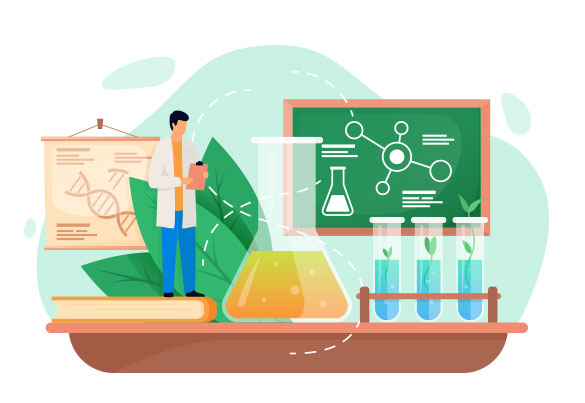Insecticides-Like Library
Insecticides are a heterogeneous group of chemicals used to kill insects. They are widely applied in agriculture and household practices to avoid damage caused by insects. The widespread use of insecticides greatly contributes to agricultural production and the prevention of deadly diseases by destroying their vectors. However, almost every pesticide has the potential to significantly alter ecosystems. Many of them are toxic to humans, and some are concentrated along the food chain. Many of pesticides have been associated with a number of adverse health effects such as neurological and psychological disorders, metabolic disorders, hormonal imbalances, and even cancer in non-target species, including humans.
Aiming to develop new pesticide compounds, BOC Sciences has established a insecticides-like library containing 640 compounds.
 Figure 1. Insecticides are categorized into five different groups based on their physiological target. (Necla, B. L.; et al. 2021)
Figure 1. Insecticides are categorized into five different groups based on their physiological target. (Necla, B. L.; et al. 2021)
Insecticides-Like Library Design
BOC Sciences introduces cross-modeling methods that combine Bayesian and pharmacological approaches to design this special screening library containing predicted insecticides:
- Known insecticides are clustered into four training sets for the subsequent modeling performance
- Then, we apply these training sets to develop, optimize and validate pharmacophore models with different pharmacophore characteristics and exclusion volumes
- Our teams carry out screening campaigns against the best optimized pharmacophore models
- The obtained results are rescored using two well-designed rescoring functions: the first one is developed based on pharmacophore feature weights and the second one is designed based on molecular descriptors (QSAR)
- The Bayesian models are constructed for the same training set based on fingerprints and different molecular descriptors
- We collect the compounds with the highest scores selected from pharmacophore modeling, and compare them with top-scored compounds obtained from Bayesian modeling
- Finally, only compounds selected by these two methods and visual analysis will be included in our library
 Figure 2. Next-generation pesticides. (Necla, B. L.; et al. 2021)
Figure 2. Next-generation pesticides. (Necla, B. L.; et al. 2021)
Insecticides-Like Library Characteristics
- No PAINS or toxic substances/unwanted functions: filtered by strict ‘Ro5-like’ physicochemical and most stringent in-house structural filters
- All compounds are continually updated
- Compound cherry-picking service is provided
What We Deliver
- Delivered within 2 weeks in any customer-preferred format
- Powders, dry films or DMSO solutions formatted in vials, 96 or 384-well plates
- All compounds have a minimum purity of 90% assessed by 1H NMR and HPLC
- Analytical data is provided
BOC Sciences provides professional, rapid and high-quality services of Insecticides-Like Library design at competitive prices for global customers. Personalized and customized services of Insecticides-Like Library design can satisfy any innovative scientific study demands. Our clients have direct access to our staff and prompt feedback to their inquiries. If you are interested in our services, please contact us immediately!
Reference
- Necla, B. L.; et al. Are insect GPCRs ideal next-generation pesticides: opportunities and challenges. The FEBS Journal. 2021. 288 (8): 2727-2745
